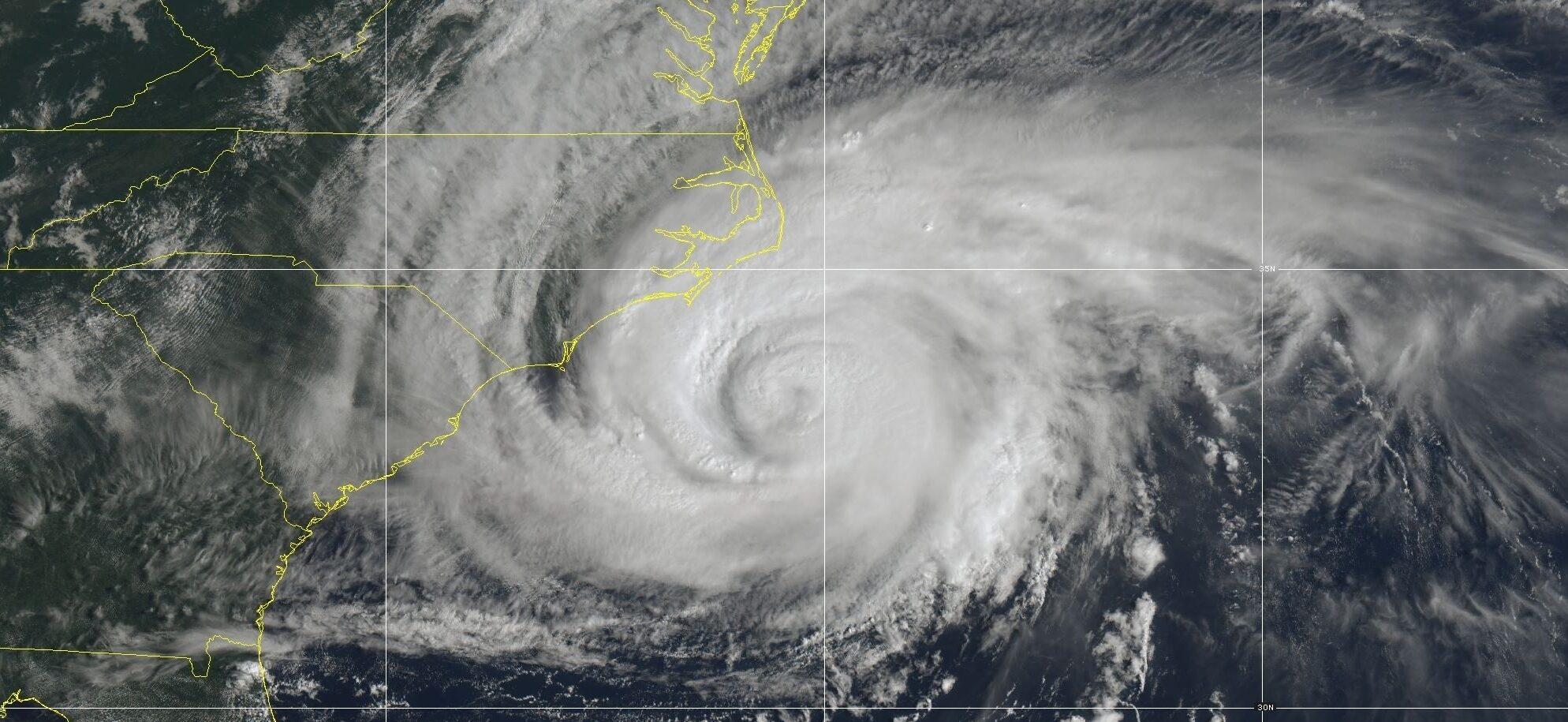Tropical Storm Ophelia: State Of Emergency Declared, 70,000 Buildings Lose Power
By Afouda Bamidele on September 23, 2023 at 5:30 PM EDT

Tropical Storm Ophelia brought its full wrath against North Carolina after landing on the state's coast!
The storm arrived near Emerald Isle early Saturday morning, bringing heavy rains, strong winds, and coastal flooding. The threat left several homes and businesses without power, a problem that could affect more areas.
However, the threat is expected to weaken as the storm moved along the US East Coast this weekend. Before its arrival, warnings were issued to the affected areas, and residents were advised to stay indoors when the flooding began on Friday, September 22.
Tropical Storm Ophelia Arrives With Increased Strength Close To That Of A Hurricane
The tropical storm lashed out at North Carolina around 6:15 a.m. with winds of 70 mph. According to the National Hurricane Center, Ophelia's winds extended beyond its core up to 320 miles, a storm force dangerously close to a hurricane's strength.
620am EDT 23 September -- Tropical Storm #Ophelia has made landfall near near Emerald Isle in North Carolina with maximum sustained winds of 70 mph.
Latest: https://t.co/Dl4SklCoht pic.twitter.com/6Kc9cmsS2l
— National Hurricane Center (@NHC_Atlantic) September 23, 2023
The threat of heavy rains and flooding caused states of emergency to be declared in Virginia, North Carolina, and Maryland. Additionally, two MLB games — Braves & Nationals match in Washington, D.C., and Diamondbacks & Yankees in New York — were postponed from their initial schedule for Saturday.
The Atlanta Braves and the Washington Nationals announced they would replay their game on Sunday, while the Arizona Diamondbacks and New York Yankees were yet to give a new date for their match. The MLB matches could safely return on September 24 as the tropical storm's strength was expected to drop.
The storm had 50 mph winds as of 11 a.m. and should continue to weaken as it moved inland. The hurricane center revealed that Ophelia would travel across eastern North Carolina and then pass through southeastern Virginia before moving farther north across the Delmarva Peninsula on Saturday and Sunday.
Since its arrival on Saturday morning, the storm has reportedly caused power outages in over 70,000 homes and businesses across North Carolina and the mid-Atlantic. The state's coast suffered storm surge flooding of more than 3 feet that submerged roadways.
The flooding began with the communities along North Carolina’s coast receiving the brunt of the storm's wrath. Coastal Cedar Island's Highway 12 was covered in water, and the state's transportation department responded by imploring residents to stay indoors.
Coastal areas in North Carolina experienced heavy rain and nearly hurricane-force winds as Tropical Storm Ophelia made landfall. The storm was expected to weaken while turning north toward other states. https://t.co/MDmj3hHxvW pic.twitter.com/rZiE1yDk7R
— The New York Times (@nytimes) September 23, 2023
“Please don’t go out tonight unless you absolutely have to. There is sand and water on the roadway, and it’s dark and stormy,” the organization advised in a social media post.
The rising water levels also affected the coasts of Virginia and Maryland, causing Maryland Governor Wes Moore to issue a flood warning. “If you can avoid driving or being out during the storm, please do so. We are expecting an extended period of strong winds, heavy rainfall, and elevated tides,” the politician said.
East Coast Residents Received Tropical Storm Warning Before The Heavy Rains Appeared
On Thursday, September 21, parts of the East Coast were warned about the approaching storm and the possibility of it becoming a tropical cyclone. Residents along coastal North Carolina to Delaware were advised to gather supplies and prepare for the heavy rains.
The hurricane center defined a potential tropical cyclone as a disturbance that appeared within 48 hours while carrying the threat of tropical storm or hurricane conditions. The brewing storm was expected to arrive on the North Carolina coast between Friday night and early Saturday.
Storm surge brought severe flooding to Belhaven, North Carolina, this morning as Tropical Storm #Ophelia made landfall. #NCwx pic.twitter.com/Qc0UsyOaOQ
— AccuWeather (@accuweather) September 23, 2023
Addressing the storm's potential impact, the meteorologist Maria Torres said: “This will bring some tropical storm force winds and storm surge along with the high winds to the East Coast through the weekend, mainly from the Southeast to the Mid-Atlantic states.”